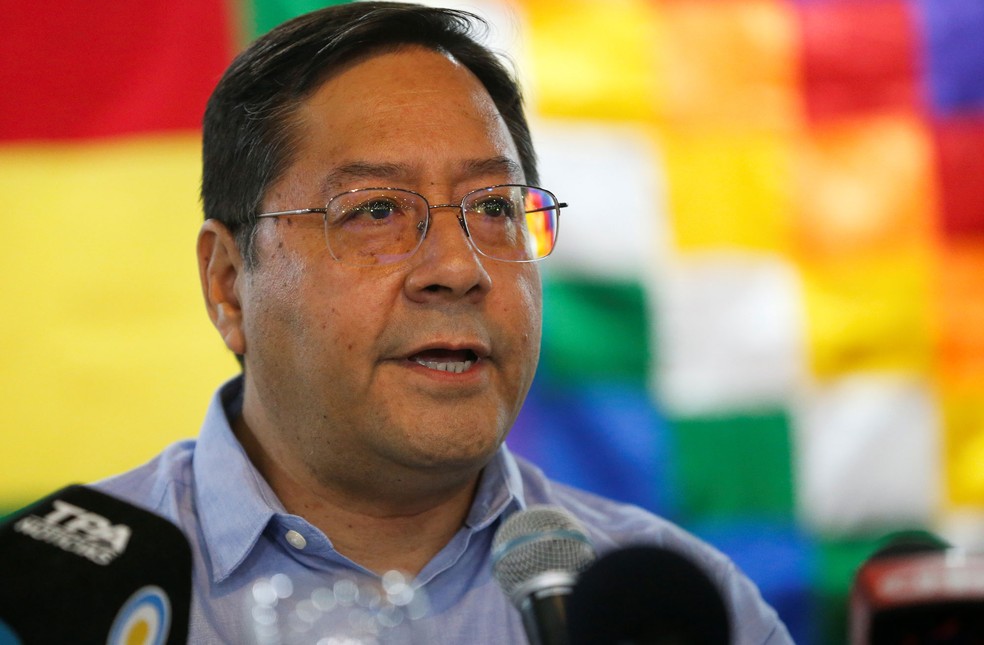RIO DE JANEIRO, BRAZIL – Luis Arce, the presidential candidate of MAS, Evo Morales‘ party, has sufficient support from voters to halt attempts at political and social change that have been underway in Bolivia since the ex-president left office in November.
With less than a month to go before the October 18th elections, polls with the highest credibility among MAS rivals estimate that Arce meets both requirements to be elected without the need for a second round: he has over 40 percent of voting intentions and surpasses the second-placed candidate, ex-president Carlos Mesa, by over ten percentage points. Mesa appears in the latest poll – which better reflects the climate in rural areas – with 26 percent support.

One of the anti-Evo political leaders recently understood the implications of this assessment. One day after the release of the data, on September 17th, the country’s interim president, Jeanine Áñez, abandoned her candidacy so that “the democratic vote would not be divided among several candidates and, as a result of this division, the MAS would ultimately win the election.” In the poll, Áñez was languishing in fourth place and was one of the political figures most rejected by the population, after erosion in support caused by her management of health services and the economy during the pandemic.
So far the president has not informed her followers, about ten percent of the electorate, whether she will vote for Mesa, the strongest candidate in the western area of the country, or for the third major candidate, the ultraconservative Luis Fernando Camacho, who is the favorite of the eastern region. Another former presidential candidate Samuel Doria Medina said he will support “anyone who has a chance to stop the MAS.” This entrepreneur leads one of the coalition parties that had nominated Áñez as a candidate.
On the other hand, the president’s own political group, the Movimiento Democrata Social, with roots in the eastern part of the country, could be pressured to support Camacho, the main regional candidate, even if the pre-electoral polls place him below Mesa. As a result, the exit of the incumbent from the electoral race does not guarantee the concentration of the vote against the MAS. According to Doria Medina, the return of the leftist party to power would entail “revenge, persecution of democrats, imprisonment of those who fought in the streets [against the previous government] and a ‘war’ between regions.”
The political elite that fiercely opposed Morales and pushed for his overthrow also want to be rid of his legacy. They seek to mitigate the statism of the economic model, to return to the “republic” in place of the “Plurinational State” established by the 2009 Constitution, to form a more technical and thus also more elitist bureaucracy, and to cancel the country’s diplomatic alignment with enemies of the United States like Cuba and Iran, among other changes. It has the support of the Armed Forces and the police, and could promote the support of the majority of the population for its program, but cannot overcome its internal division, caused by personal and regionalist issues.
According to public opinion expert Julio Córdova, after Áñez’s withdrawal from the race, and considering that some 20 percent of the population has yet to define who to vote for, three relatively isolated electoral spaces can be observed that will hardly transfer votes between them. In the first space are the urban and rural lower classes. The electorate in this sector will vote for Arce, although other groups have stopped supporting MAS because of its mistakes in government and are now undecided. If the elections were held today, these groups would vote mainly blank or void, since “they are not thinking of voting for right-wing candidates.” The MAS’s bet is to persuade them to support the party again.
In a second space is the “moderate middle class,” mainly in the western part of the country. The electorate in this sector will either vote for Mesa or are undecided because “they doubt the former president’s power to stop the MAS and don’t see in him a new option that gives them hope,” explains Córdova. Mesa’s bet is to get these undecided voters to lean toward the “useful vote”. In other words, to vote for him to prevent someone else from winning.
Finally, there is a third space, the “very conservative and regionalist middle class, mainly from Santa Cruz,” which will vote for Camacho. In this sector, the percentage of undecided voters is lower, which is why Cordoba believes that Camacho will not lose support due to the “useful vote” and that “he will benefit more than Mesa from Áñez’s ex-voters”. Should this be the case, MAS could hold an advantage of more than ten percentage points over the ex-president and thus win in the first round.
Historian Pablo Stefanoni summarizes the factors that will determine the election result. “It seems that they will be defined by ‘useful vote’ and ‘hidden vote,'” he says. “Carlos Mesa bets that the ‘useful vote’ will work as it did in 2019 and will serve to attract the anti-MAS vote in the east of the country. At the moment, the regionalization of candidacies limits the possibilities of this strategy,” he explains.
On the other hand, MAS hopes to get a strong flow of the “hidden vote,” that is, the support that does not show in the polls because voters are afraid or ashamed to express it in public, a type of vote that the leftist party has always had, although in different proportions. “Given the climate of judicial persecution against MAS, it is not unrealistic that among the undecided there are many votes for Arce,” Stefanoni points out. He concludes that “nothing is defined and this will be a very open-ended campaign, in which the small percentages can be decisive.
Source: El País

